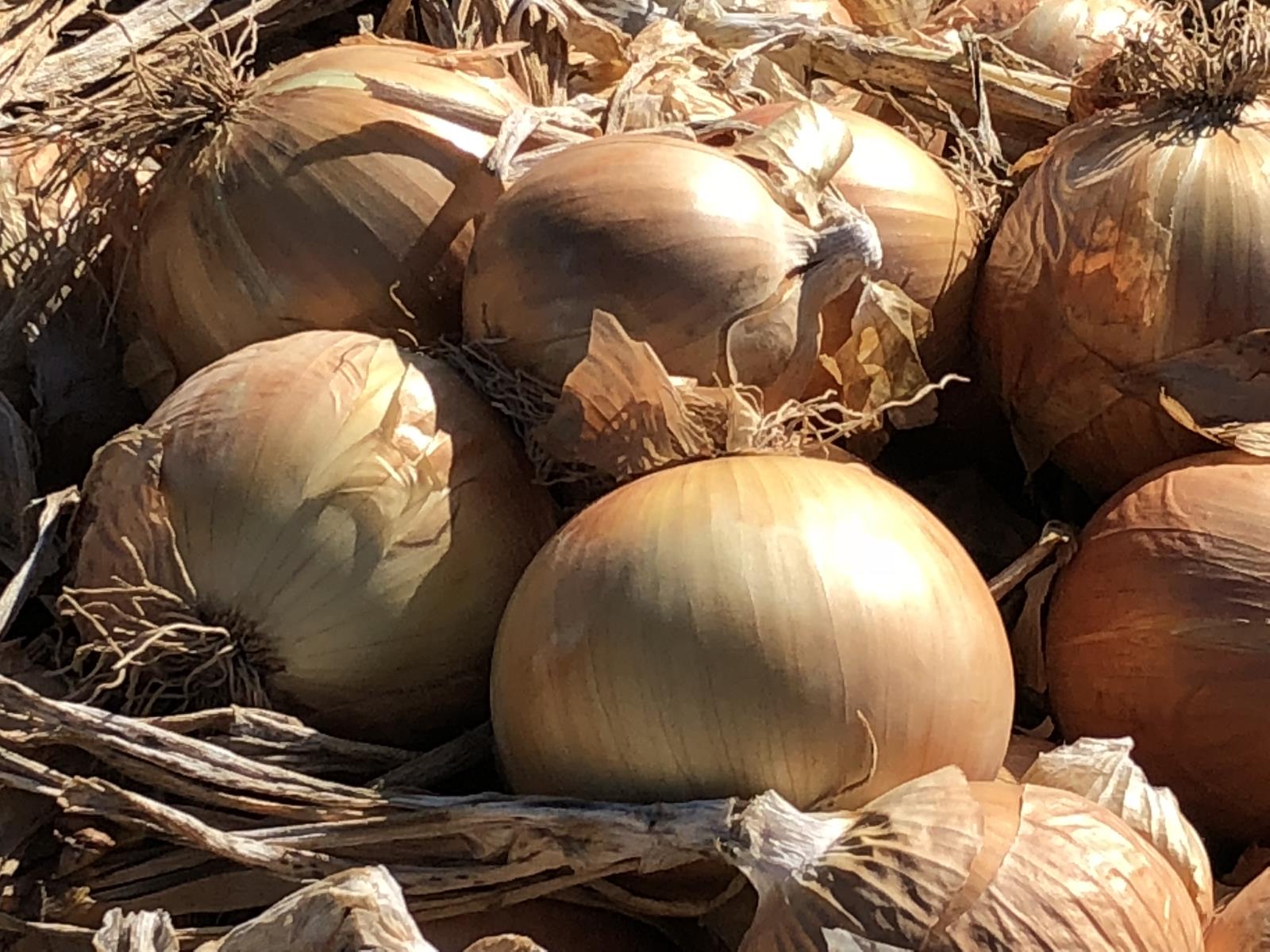Idaho-Oregon onion region slammed by coronavirus reaction

By Sean Ellis
Idaho Farm Bureau Federation
POCATELLO – Onion Country USA has been hit hard by disruptions in demand caused by the coronavirus outbreak.
Demand for the Spanish big bulb onions grown in the Idaho-Eastern Oregon growing region has screeched to a halt since the outbreak caused a virtual shutdown of restaurants and other foodservice channels.
“Everything has slowed down quite a bit,” said Eddie Rodriguez, co-owner of Partners Produce, one of about 35 onion shipping companies in the Treasure Valley area of Idaho and Oregon. “It’s devastating.”
Rodriguez said his company is shipping only about 10 percent of what it was before the stay-at-home orders related to the virus outbreak took hold.
The Idaho-Eastern Oregon onion region is normally the nation’s largest in terms of volume and growers there produce about 45 percent of the onions consumed in the United States from mid-August through April.
Onion shippers in that area, which is marketed by the industry as Onion Country USA, buy from farmers on both sides of the border.
Most of the big bulb onions produced in the region are sold to restaurants and through other foodservice channels, which have slowed considerably during the outbreak.
The current situation is bad enough but the industry is also extremely concerned about the future, said Kay Riley, manager of Snake River Produce, an onion shipper based in Nyssa, Ore.
“We’re very concerned about the upcoming fall if we don’t get restaurants and foodservice back open,” said Riley, who is the marketing order chairman for the Idaho-Eastern Oregon Onion Committee. “There are big concerns for next year.”
Because of the major slowdown in demand, many of the big companies that buy the onions produced in this area have significantly reduced the number of acres they typically contract for from Idaho and Eastern Oregon farmers.
“Big companies don’t want to forward-contract” as much as they normally do, Rodriguez said. “That’s going to make it tough on us.”
As a result of the slowdown in demand, onion shipping volume and prices are both down and growers as well as shippers are under the gun financially, he said.
“Some friends of mine are getting $3 to $4 per (50-pound) bag, which is pretty much what it costs to grow the onions,” Rodriguez said. “The returns for growers are pretty much zero.”
Onion growing organizations recently sent a letter to U.S. Agriculture Secretary Sonny Perdue outlining the industry’s current plight.
“As a result of the loss of orders, many of the area shippers who were close to finishing for the season will not be able to sell or in some cases even give away their onions,” states the letter from the Idaho and Malheur County (Oregon) onion growers associations and Idaho-Oregon Fruit and Vegetable Association. “The few onions that are being sold are being sold at a loss.”
According to the letter, the area’s onion customers have reported reductions in business of as much as 95 percent.
“This onion growing area has come to a standstill,” the letter states.
According to the letter, one onion shipper has reported they will be dumping about 5 percent of their overall production, or about 50,000 50-pound bags, which is equal to about 63 semi loads of onions. And that’s just one of the area’s 35 shippers.
Exacerbating the situation is the fact that most of the area’s onions for the 2020 season were already planted when the major stay-in-place orders related to the outbreak began to break.
What growers and shippers are facing now is serious but nothing compared to the challenges they will likely face when they begin harvesting the 2020 crop in early August, the letter states.
“It is likely that shippers will only be able to market a fraction of the crop,” it states.
Growers and shippers said the 2020 crop is progressing nicely and yields and quality will likely be superb.
However, processors have cut pre-season contracts significantly because of lost foodservice business, which means a lot of growers could face serious financial challenges because their 2020 crop will have no home, Malheur County Onion Growers Association President Paul Skeen said in an April 28 news release outlining the dire situation the industry faces.
“Area processors are cutting pre-season contracts by 35-45 percent,” said Skeen. “Because of lost business and the foodservice business reduced by 50-75 percent, it leaves the growers with a crop that is planted and that likely can’t be marketed.”
The letter to Perdue asks USDA to keep onion growers in mind when the department determines how to distribute money contained in a $19 billion ag relief bill announced April 17.
“There is concern in and for the onion industry that without some kind of assistance, the growers and shippers will see disasters beyond anything they have previously experienced,” the letter states.
In the news release from the Malheur County Onion Growers Association, Skeen said, “If this area doesn’t get help and fast, the outlook for one of the most famous onion regions in the nation is bleak.”
Still can't find what you are looking for? Find by topic:
- County Presidents & Board Information
- County Resource Page
- Delegate Form
- Discount Programs
- Discussion Meet
- Discussion Meet - High School
- Education Programs
- Events
- Excellence Award (YF&R)
- Expense Voucher
- Flickr
- Gem State Producer
- High School Discussion Meet
- High School Speech Contest
- Hope in Idaho Ag
- House of Delegates Credentials Form
- IFBF Board of Directors
- IFBF Staff
- Insurance
- Issue Advisory
- Legislative Action Program
- Legislative Issues
- Library
- MAC Trailer
- Magazines
- Map My Benefits
- Member Benefits
- Member Discount
- Membership Application
- Mental Health Resources
- Mission Statement
- Moving Agriculture to the Classroom
- Newsletter Sign up
- News Releases
- News Room
- Open Range Law
- Photo Contest
Thank You to Our Partners









